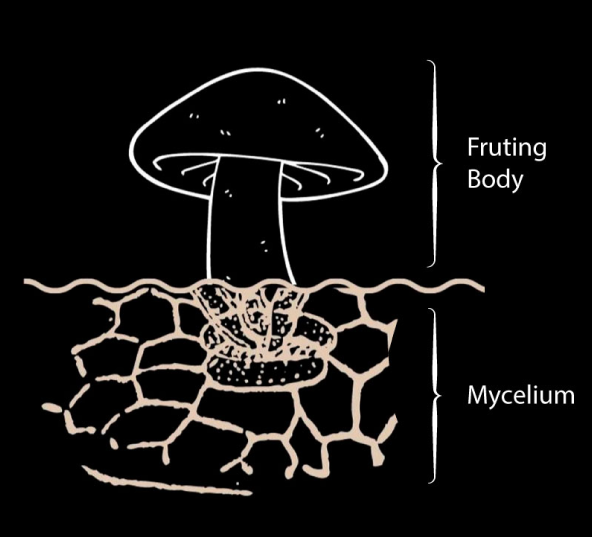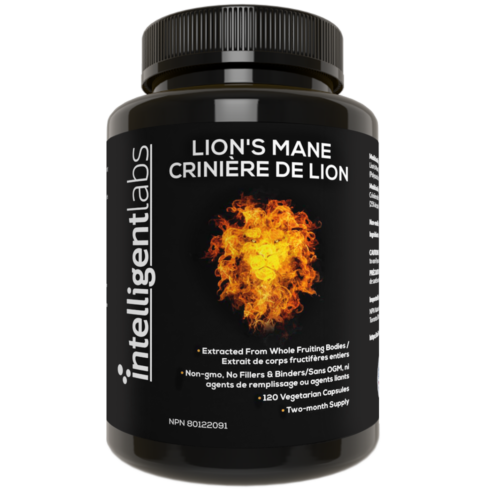Nootropics
Lion’s Mane Mycelium vs Fruiting Body – Key Facts You Need To Know
Lion’s mane mushrooms are fast gaining popularity in both the culinary and the nootropics world. But what exactly are we referring to when we say “lion’s mane mushrooms”? To answer this question, we’ll take a look at the main differences between lion’s mane mycelium vs fruiting body. And together, we’ll find out which one’s better when it comes to supplementing with this medicinal mushroom!
Table of Contents
But first, are lion’s mane mushrooms plants?
No, they aren’t. Lion’s mane belongs to the fungi kingdom, which is entirely separate from the plant kingdom. Unlike plants, fungi do not make their food from photosynthesis, that is, they do not depend on sunlight for survival.
Fungi are saprophytes, a class of organisms that cannot make their own food (like plants do). Instead, fungi get their nutrition from metabolizing dead or decaying matter, such as rotting wood, soil, or leaf litter. In the case of lion’s mane, they feed on dead hardwood like oak, beech, walnut, maple, and sycamore.
Because of this feeding behavior, lion’s mane and other fungi play a vital role in the ecosystem. They break down dead organic and inorganic materials and help cycle important nutrients like carbon and nitrogen (1).
What are the main parts of lion’s mane?
As you may have already guessed, lion’s mane (a.k.a. Hericium erinaceus) has two main parts – the fruiting body and the mycelium.
The fruiting body is the visible and above-the-surface part. This is what we think of when we hear the word “mushroom.” On the other hand, the mycelium is the network of below-the-surface “roots” that provide nutrition to the fruiting body.
Here’s an illustration:

We’ll talk more about these two parts in a minute. For now, let’s get to know chitin first because it’s an important component of lion’s mane mushrooms.
A quick background on chitin
Have you ever eaten mushrooms before? Any kind of mushroom, not necessarily lion’s mane… If so, I bet you found them chewy and even meaty.
Well, it’s the chitin that’s responsible for mushrooms’ stringy and slightly leathery texture. It’s an indigestible fiber and complex polysaccharide that makes up the rigid cell walls of mushrooms.
Chitin adds structural strength to mushrooms, making them strong enough to push through the substrate, bark, leaves, and rocks as it grows bigger. It is also the same substance found in the protective exoskeletons of shellfish and insects, so yes, chitin is quite tough (2)!
Now, on to our lion’s mane mycelium vs fruiting body discussion!
What is lion’s mane mycelium?
First off, the mycelium is NOT the actual mushroom. But it’s where everything begins – without the mycelium, there would be no fruiting body (a.k.a. the actual mushroom).
It’s the part that lives below the surface, deriving nutrients from the substrate (the organic matter the fungi feed on) and nourishing the fruiting body above ground.
The mycelium is made up of interconnected thread-like strands called the hyphae. These hyphae are practically invisible to the naked eye; they only become visible when they get tangled in clumps. At this point, they collectively become the mycelium.
Think of mycelium as a giant hyphae network that feeds on the substrate. It can spread across a vast area and live undetected below the surface. If the environmental conditions are right, the mycelium will produce fruiting bodies.
Here’s a fun fact about lion’s mane mycelium:
You won’t know there’s mycelium feeding on a dead tree stump until it starts producing those distinct-looking fruiting bodies!
Here’s a photo of mycelia branched out on a dead log:

What is lion’s mane fruiting body?
The fruiting body is the part of the fungi that’s visible above ground. These are the REAL mushrooms.
The fruiting body also contains the spores (the fungi version of plant seeds), the basic reproductive units of fungi and mushrooms alike. Since the spores aren’t hidden below ground, they can easily be carried away and transported by humans, animals, wind, and water.
When the spores land on viable organic matter, they will create new mycelial networks and the mushroom life cycle will start all over again.
Want to know what’s the best part about lion’s mane fruiting bodies?
They’re 100% edible and have the same taste and texture as crab and lobster. Lion’s mane fruiting bodies are low in fat (around 4% fat only) and rich in protein (22%). It’s got a slightly higher carb content at 57%, but 8% of that is from dietary fiber (3). Check out these lion’s mane mushroom recipes for the whole family to enjoy.
Oh, and if you’re foraging in the forest and come across lion’s mane, you don’t need to worry if it’s a poisonous look-alike because these beautiful shrooms have NO deadly clones!
Here’s a photo of a lion’s mane fruiting body in the wild:

Lion’s mane mycelium vs fruiting body in dietary supplements
When it comes to lion’s mane supplements, choose a product that uses 100% fruiting bodies, such as our Intelligent Labs Lion’s Mane Mushroom Extract.
Here’s why:

The fruiting body has higher Beta Glucans content than mycelia. Beta Glucans is a polysaccharide (like chitin) that helps boost immunity, lower cholesterol levels, and improve heart health (4, 5). Our lion’s mane supplement is standardized to contain a minimum of 25% beta glucans for max health benefits.
Also, lion’s mane fruiting bodies are rich in Hericenones, a compound that stimulates nerve growth factor (NGF) synthesis. On the other hand, the mycelium is rich in Erinacines, another compound that promotes NGF synthesis. However, the problem is that most commercially cultivated lion’s mane are cultured on a grain substrate.
Unfortunately, the harvesting process leaves a lot of starch intertwined with the mycelium. A typical mycelium extract contains a higher percentage of starch/polysaccharides than the actual mycelium itself, which means you’re not getting a whole lot (if any!) of Erinacines in mycelium-based products!
To conclude, if you want to take advantage of lion mane’s NGF benefits, supplement with a product made from fruiting bodies, NOT mycelium.
💬 Something on your mind? Share your thoughts in the comments. We love hearing from curious minds.
📩 And while you’re here, join our newsletter for more smart stuff (and secret perks)!
References
(1) Characteristics of Fungi, taken from: https://www.coursehero.com/study-guides/boundless-biology/characteristics-of-fungi/
(2) Ifuku S, Nomura R, Morimoto M, Saimoto H. Preparation of Chitin Nanofibers from Mushrooms. Materials (Basel). 2011;4(8):1417-1425. Published 2011 Aug 12.
(3) Non-volatile taste components of several speciality mushrooms, Jeng-Leun Mau, Hsiu-Ching Lin et al. Food Chemistry, Volume 73, Issue 4, June 2001, Pages 461-466
(4) Kim HS, Hong JT, Kim Y, Han SB. Stimulatory Effect of β-glucans on Immune Cells. Immune Netw. 2011;11(4):191-195.
(5) Beta-Glucans – Uses, Side Effects, and More, from: https://www.webmd.com/vitamins/ai/ingredientmono-1041/beta-glucans




